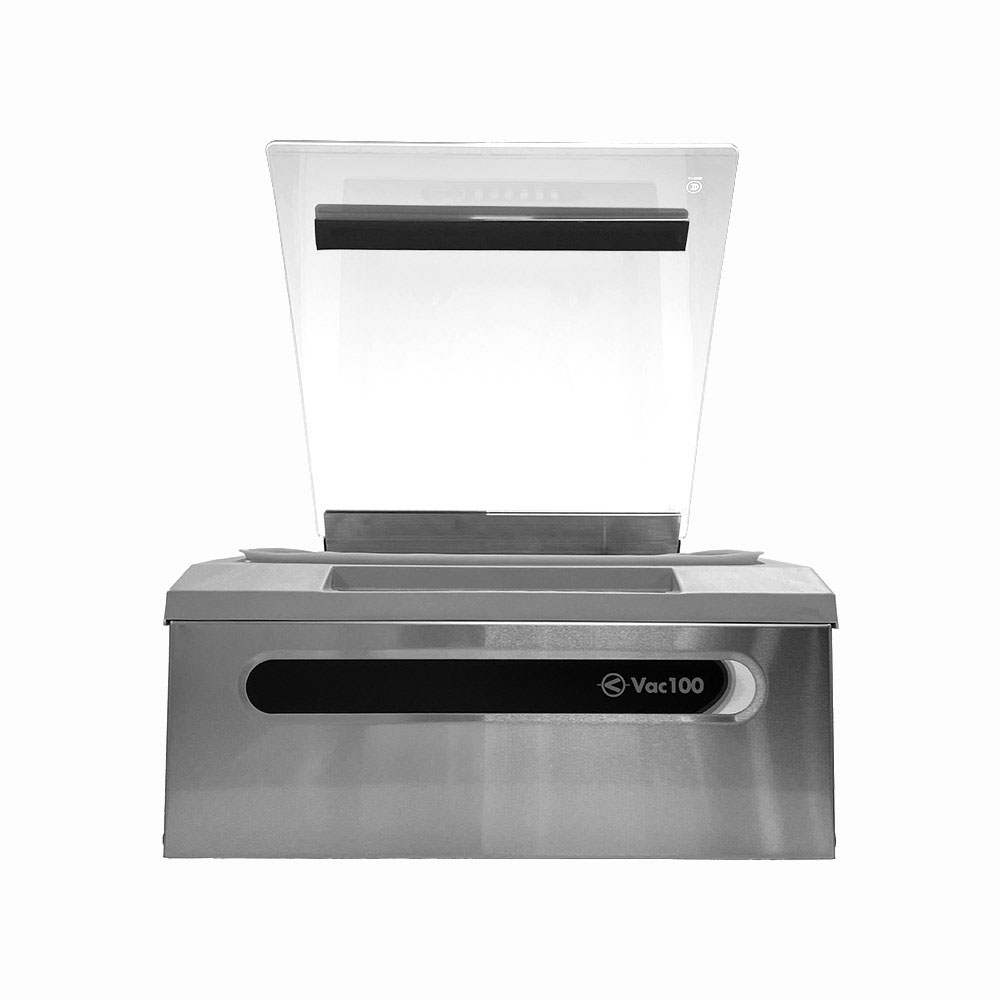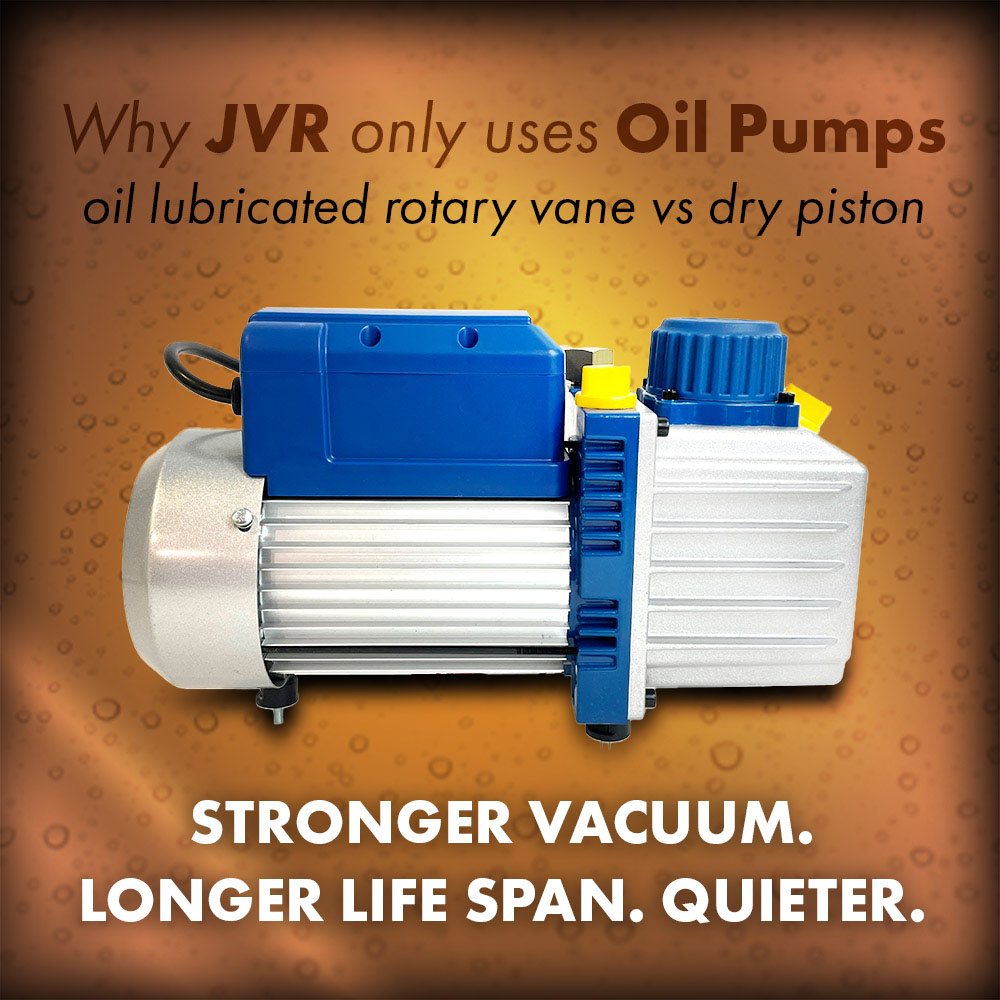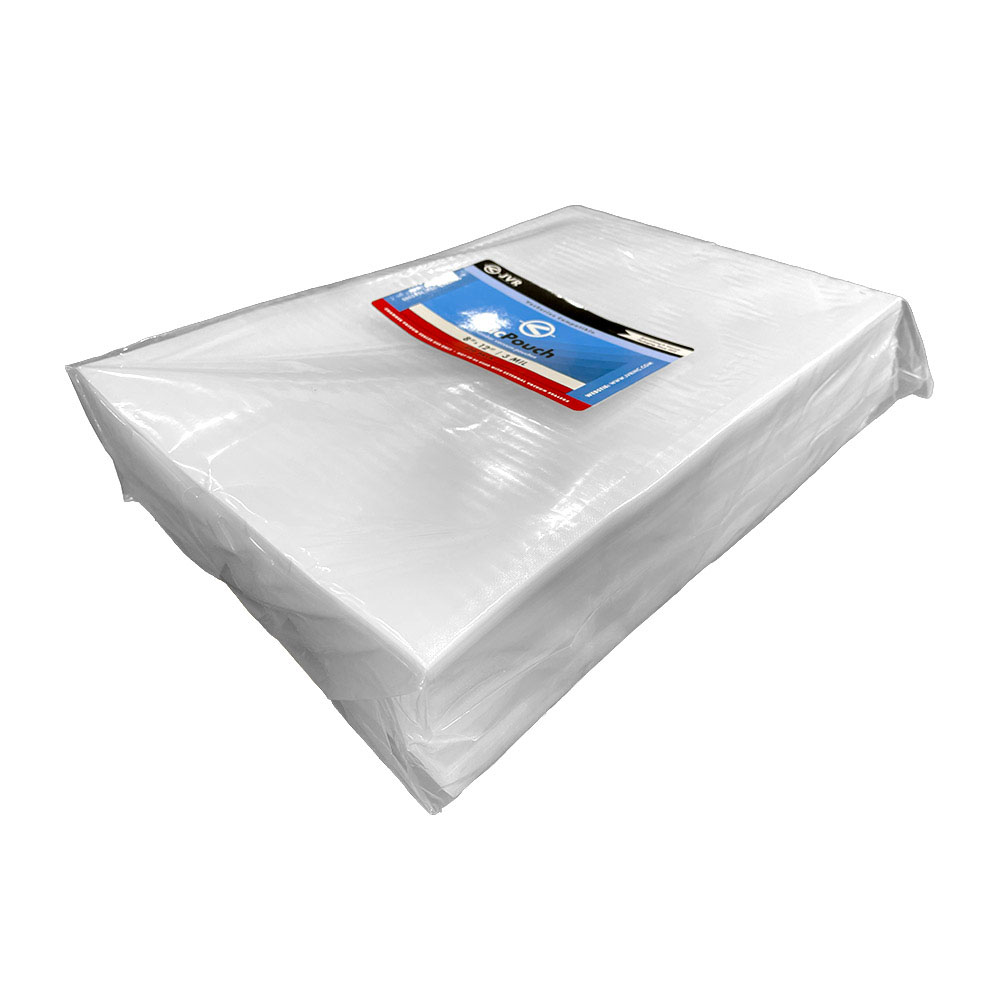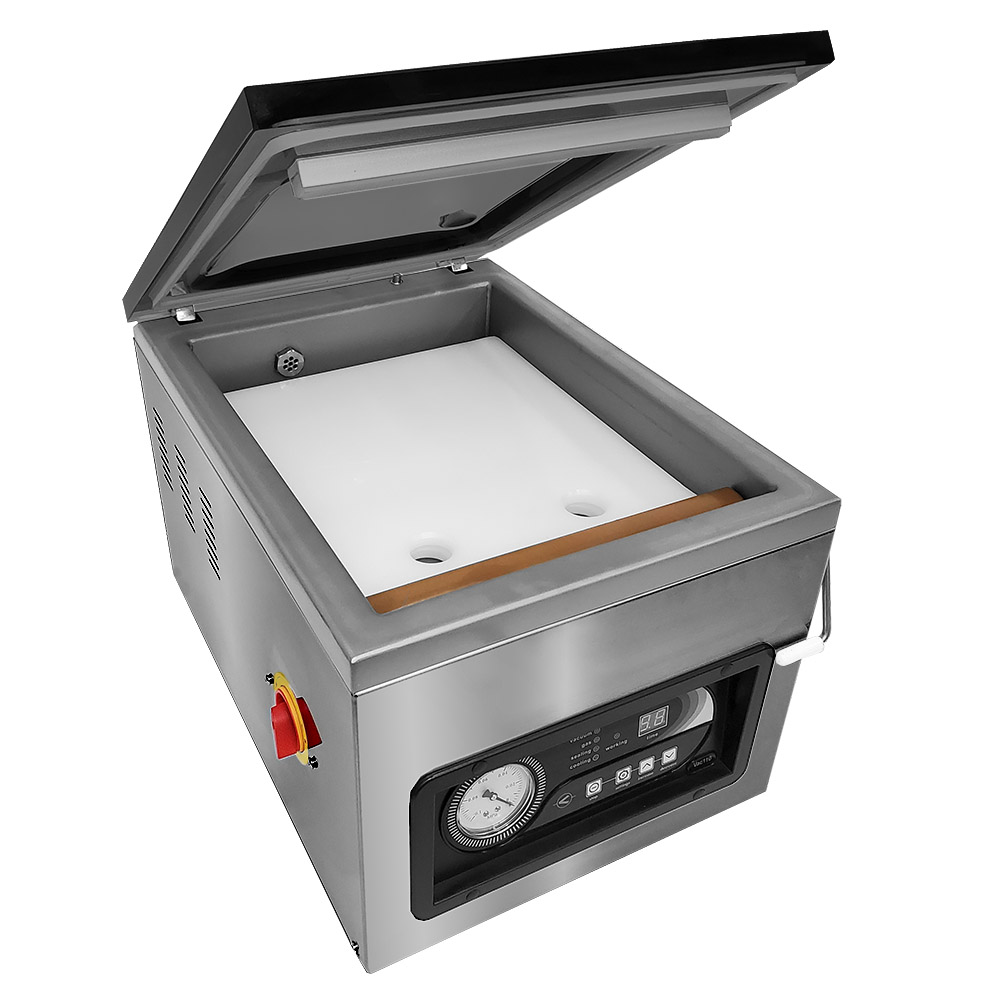How To Replace The Inlet Check Valve (100-34): JVR Vac100
“…the inlet check valve ensures that oil does not travel backward into the line of vacuum hoses.”
Here at JVR Industries, we pride ourselves on providing educational and easy-to-follow service. Whether you would rather read the steps, watch a video that steps you through, or talk to a service technician directly, we will always make sure to provide multiple sources that will ensure you get the help you need. Today, we will step through the role of the inlet check valve in the vacuum system, how to determine when it needs replacing, and the steps to replace it.
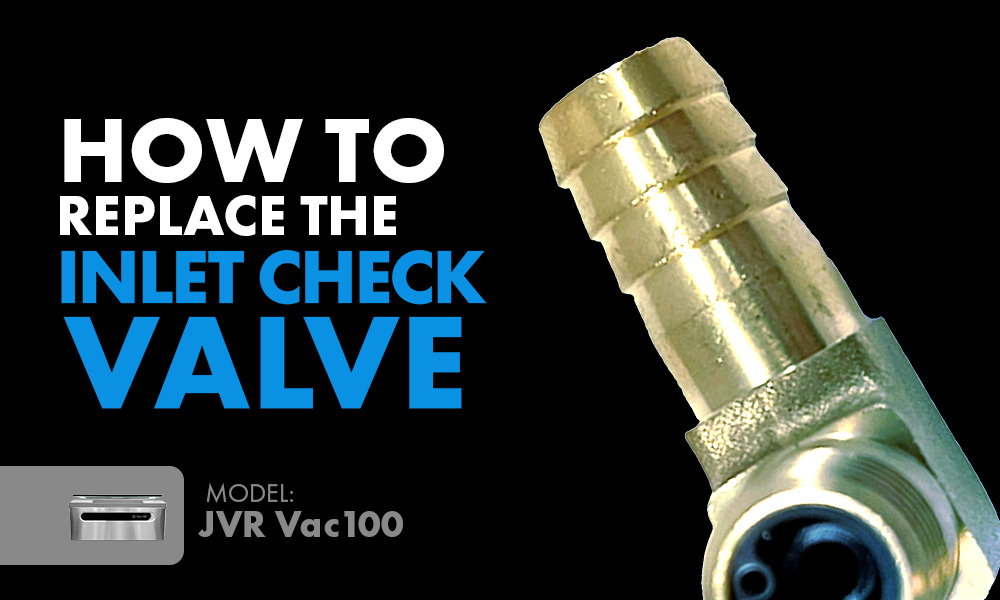
Understanding the Role of the Inlet Check Valve in the Vacuum Pump System
With the Vac100 chamber vacuum sealer holding an oil pump, it’s less likely that you will have to replace your whole unit compared to many vacuum sealers on the market. The rotary vane oil pump system, as well as the ease of self-serviceability, gives you all the right ingredients for a chamber vacuum sealer that will last as long as vacuum packaging is one of your endeavors.
Specifically for the vacuum system of the JVR Vac100, the inlet check valve ensures that oil does not travel backward into the line of vacuum hoses. The valve allows oil to go through it, but not backwards. If the oil gets backed up in the hoses, it would not go through its normal recycling process for reuse and impair the oil pump’s functioning.
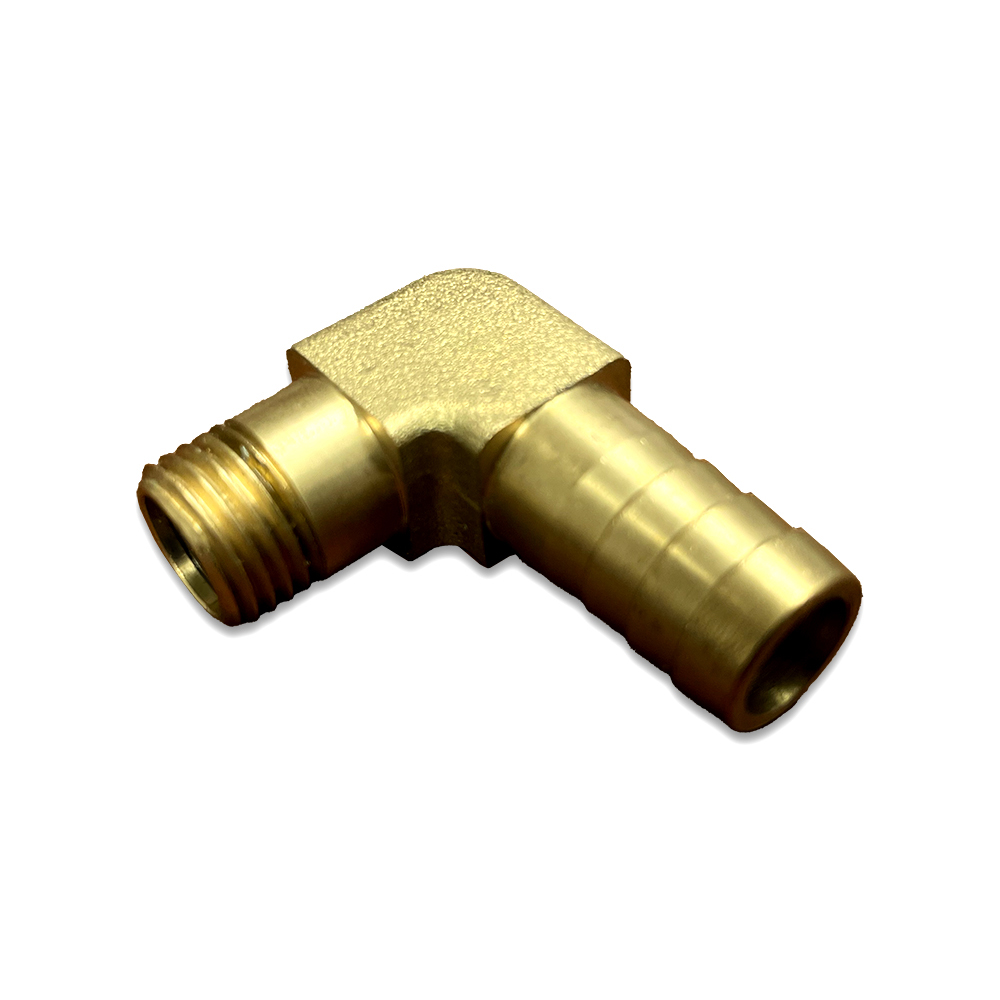
How to Know the Inlet Check Valve is the Issue
If the inlet check valve is not functioning properly, we have good news! Identifying it as the problem is quite evident. During the vacuum cycle, you might notice oil splattering at the back left corner of the Vac100 chamber or on the transparent lid. The oil splattering from the vacuum port is a symptom likely due to a faulty valve that is causing a backlog of oil in the hosing and needs to be replaced.
Difficulty Level
This self-service replacement process is sorted into the “EASY” category!
Time Required
You should expect to set aside about 5 – 10 minutes for this process.
Tools Needed
3 mm Allen Key
14 mm Wrench
#2 Phillips Screwdriver
Flathead Screwdriver
Steps To Replace the Inlet Check Valve
SAFETY FIRST: Make sure your unit is on a stable surface and remove any filler plates or other objects from the chamber that could fall out during the process.
Access the Interior
1. Rotate the unit to access the back panel.
2. Use 3 mm Allen key to unscrew the 3 screws on the back securing the exterior body to the bottom of the unit.
3. Lift the exterior body by the hinges to expose the interior of the unit.
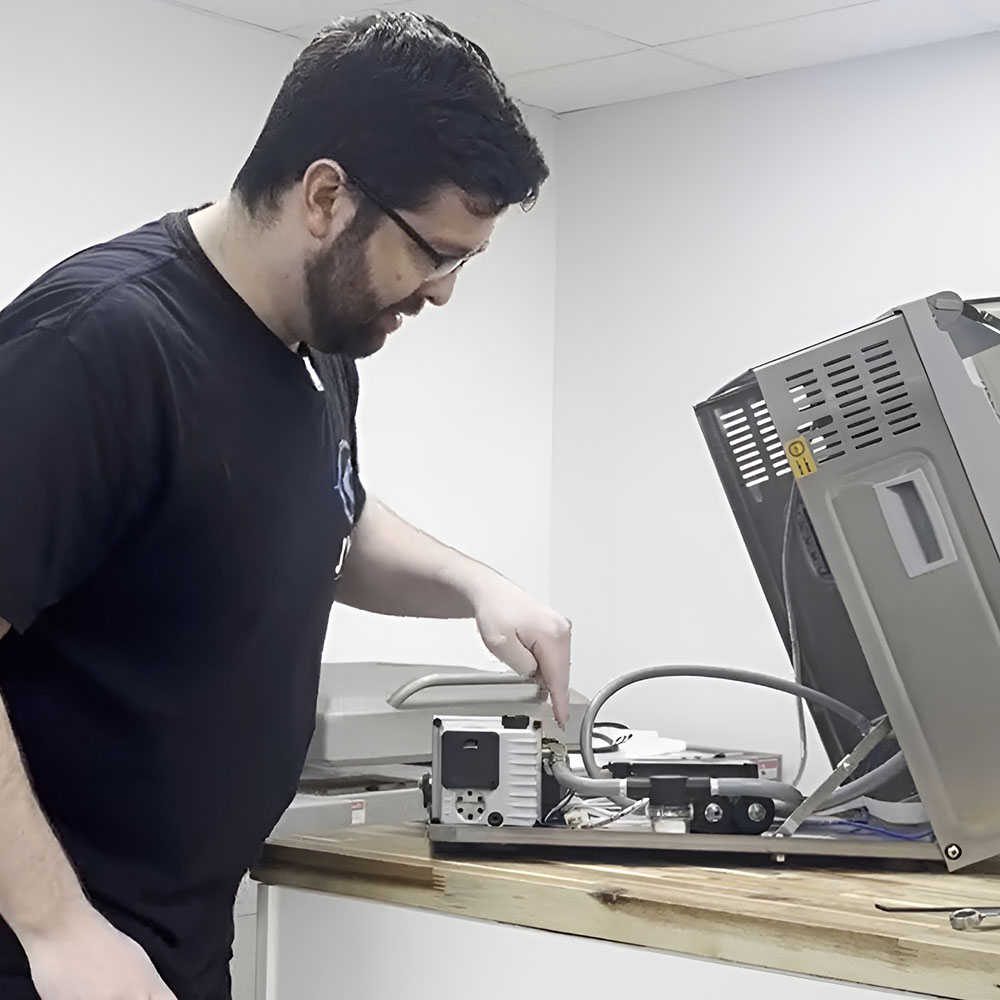
Prep
4. Remove the black box by removing all 4 screws using the #2 Phillips screwdriver. This box must be out of the way to rotate the threaded inlet valve.
5. Detach the hose clamp using the #2 Phillips screwdriver.
6. Use the flathead screwdriver to pry the vacuum hose from the valve. Go in at a 45-degree angle on the flat sides of the valve to avoid cracking the hose.
NOTE: If you do happen to crack the hose, we suggest cutting it back. Or maybe you have an inline vacuum filter installed, and you don’t have a ton of hose left, then you can buy the vacuum hoses (100-80, 100-81) before you begin this process.
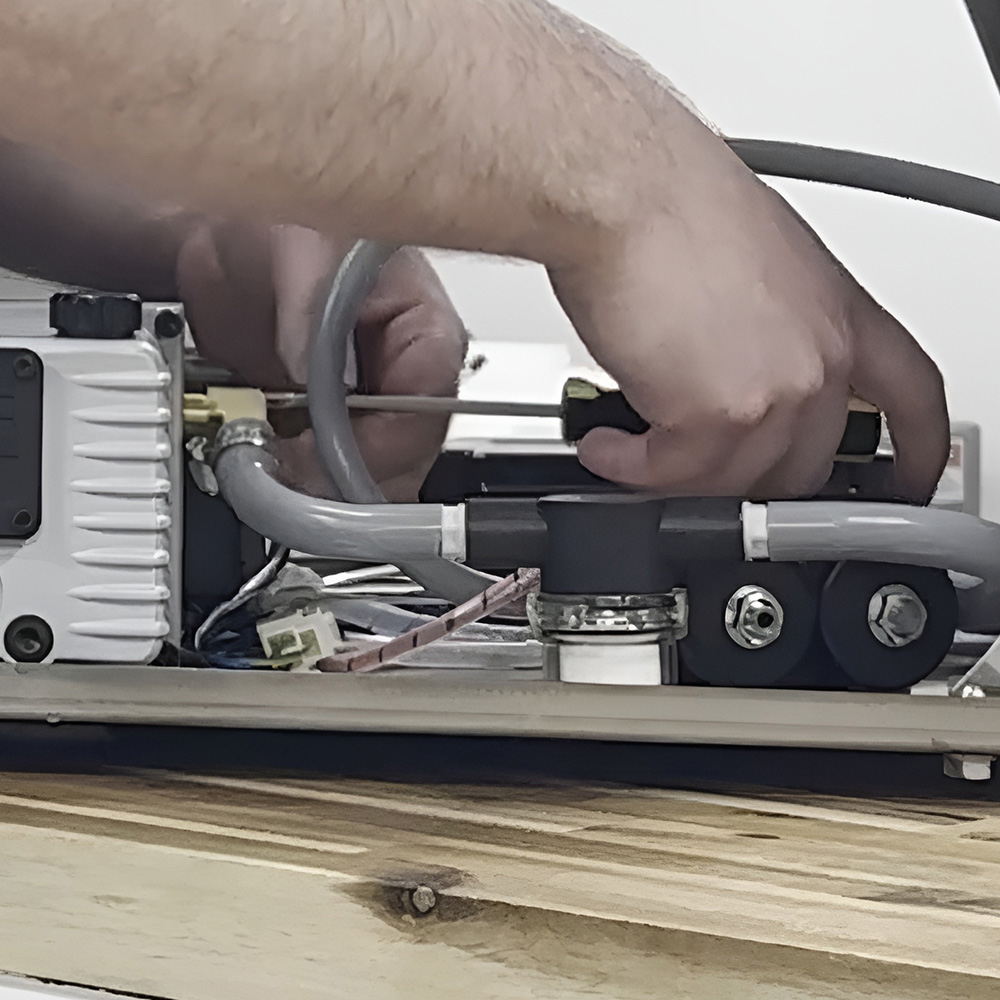
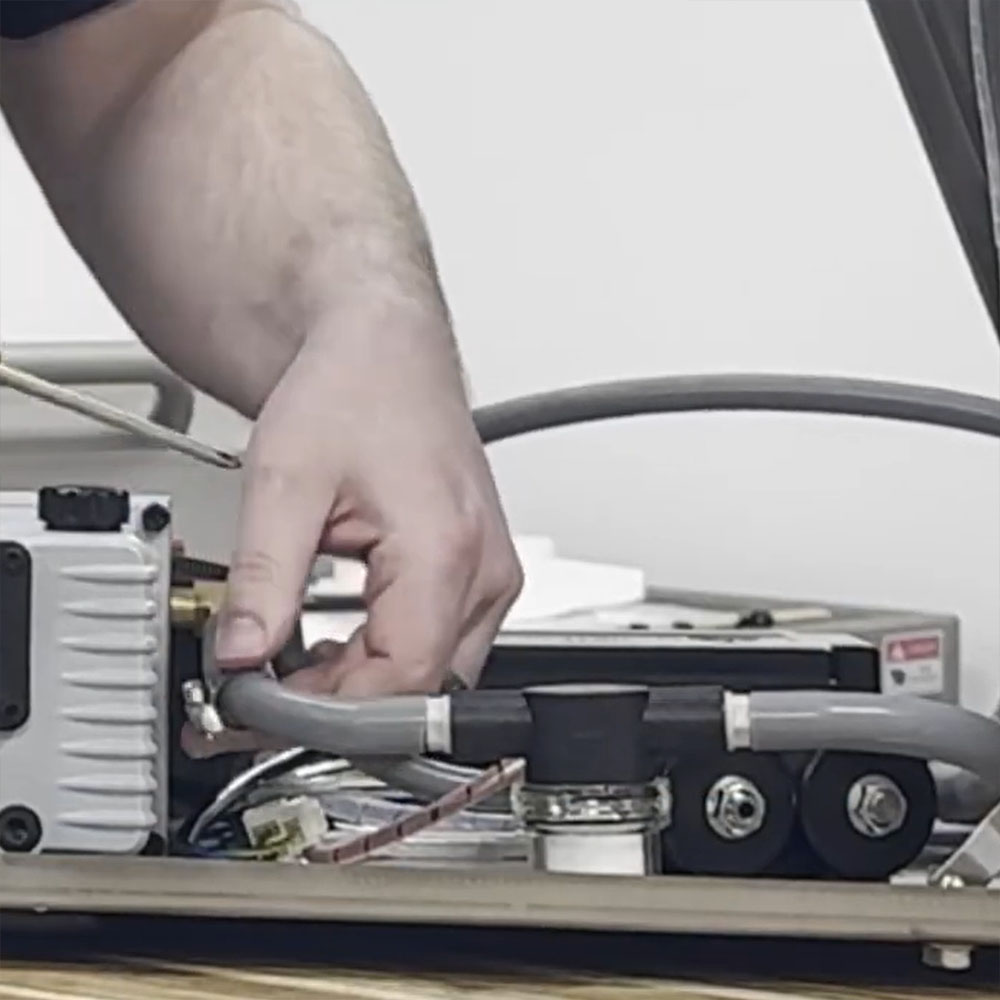
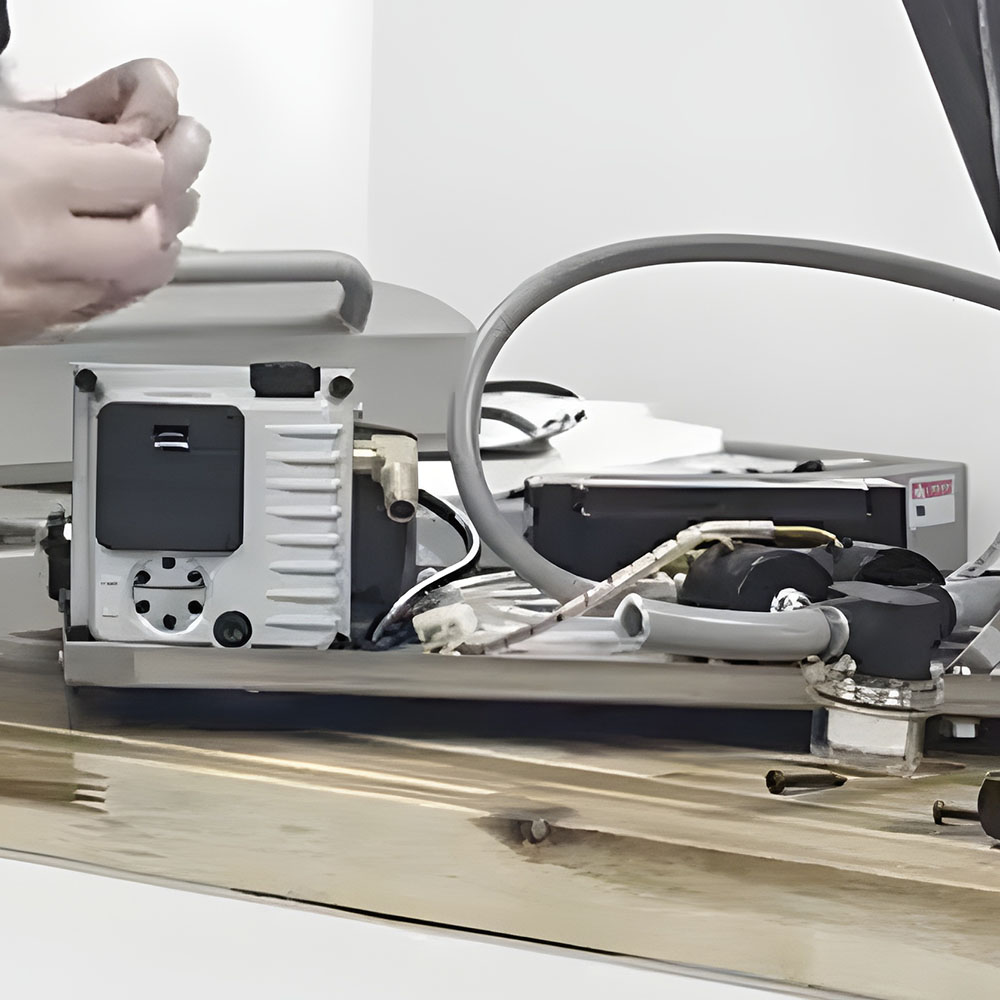
Replacing the Inlet Check Valve
7. Use the 14 mm wrench to remove the inlet check valve.
8. Screw on the new check valve (100-34) until finger tight, then secure with the 14 mm wrench.
NOTE: You might ask – why is there a silicone piece on the original inlet check valve when compared to the replacement product? The silicone is not necessary, it is simply an in-house quality measure taken as a way to ensure it is not a variable in any failure when your unit arrives.
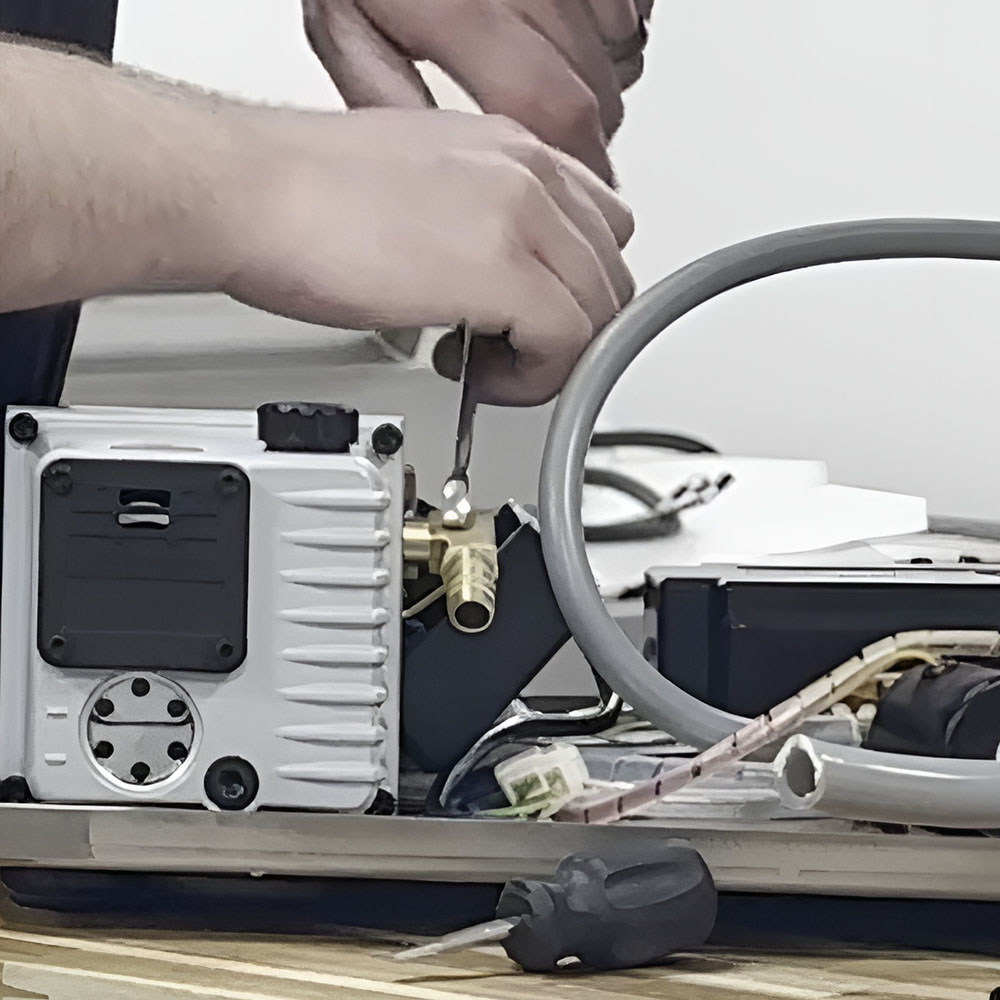
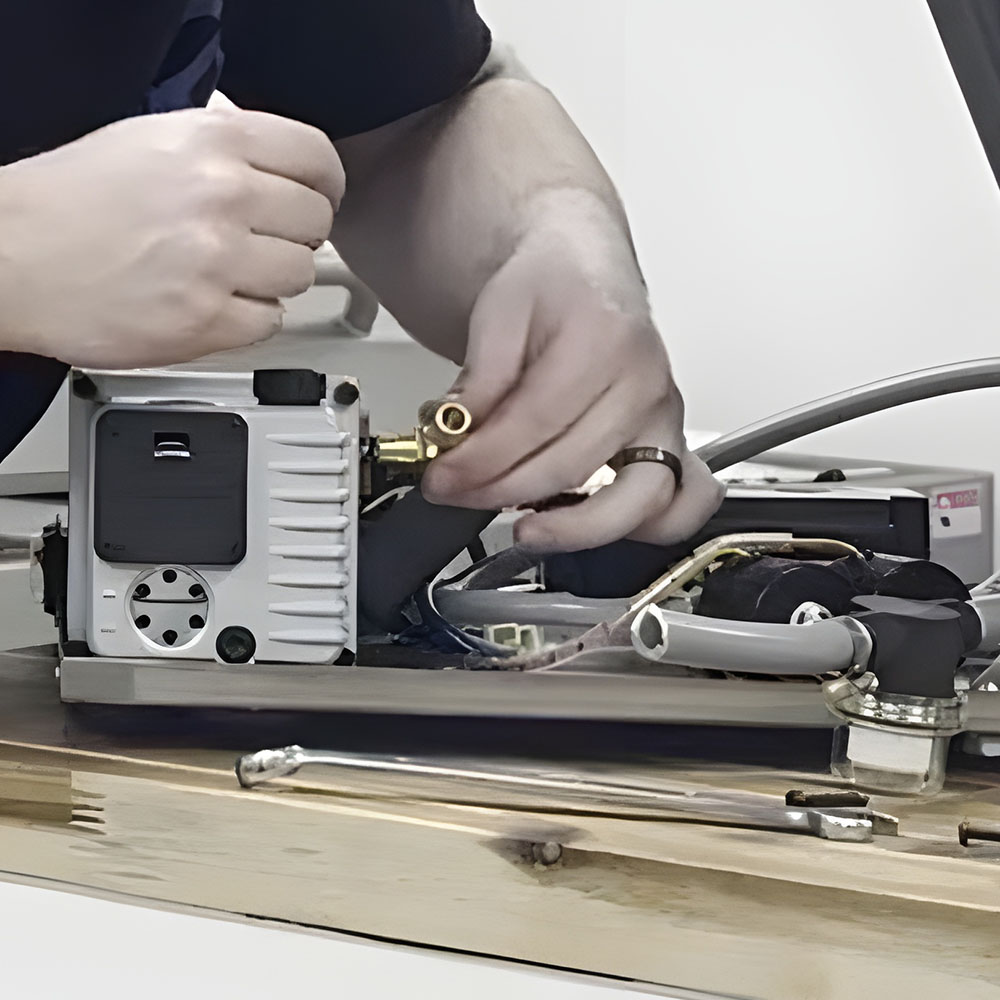
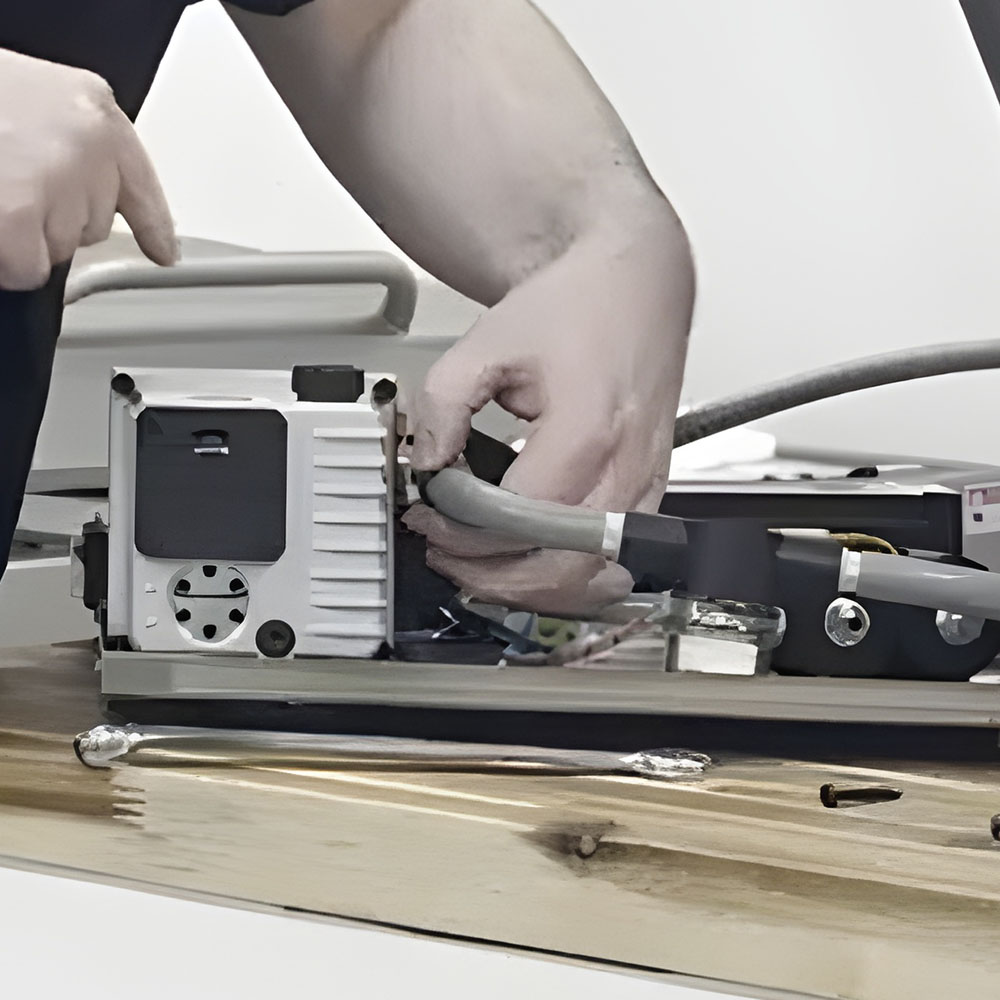
Final Steps
9. Fit the vacuum hose securely back onto the valve.
10. Secure the hose clamp.
11. Reset the black box with all 4 screws.
12. Run the unit about 20 times through before vacuum packaging.
NOTE: With the first few runs, oil may still splatter out simply because some may have been left behind in the tubing. You are welcome to remove the vacuum hoses during the replacement process to clean, OR simply replace the item completely as a way to ensure everything has a fresh start. Purchase these by going to our Vac100 parts page (part numbers 100-80 and 100-81).
Additional Information
Need help diagnosing a problem on your unit? Our company has been specializing in vacuum packaging for well over 50 years. We are highly confident that our service techs will not only be able to step through providing you the right information, but will also provide personable service.
Want to read more articles like “How To Replace The Inlet Check Valve (100-34): JVR Vac100” Click below!
.

